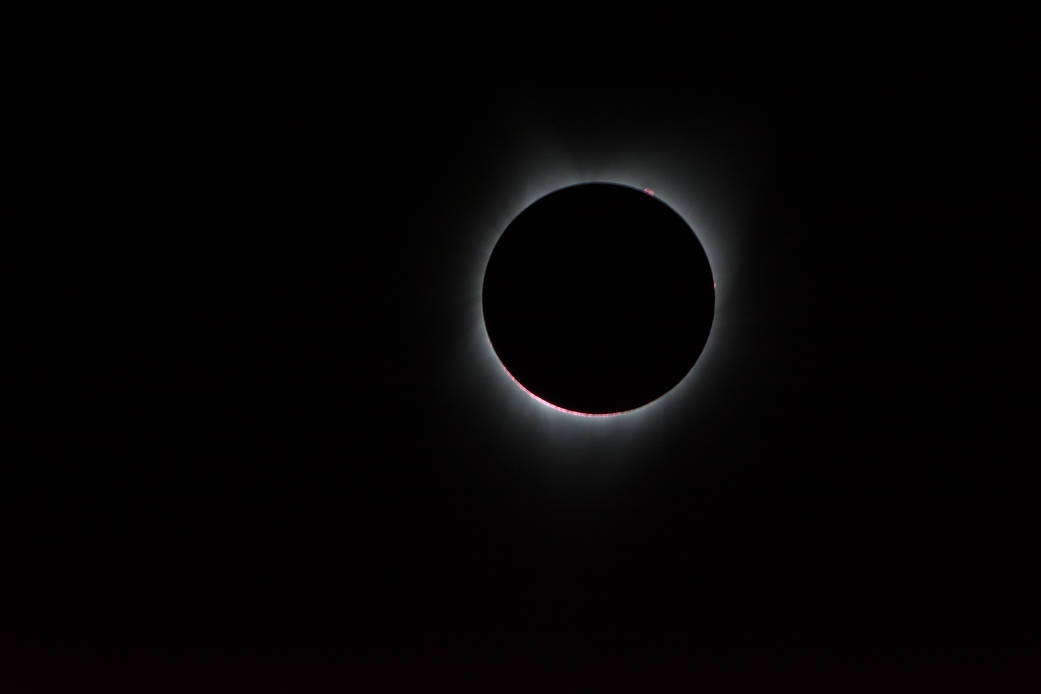The Sun’s visible-light corona, the inner part of which is only visible during a total solar eclipse, is seen here as a pearly crown of light surrounding the darkened, Earth-facing side of the Moon. The image was taken on August 21, 2017 from a NASA Gulfstream III aircraft flying 35,000 feet above the Oregon coast. The reddish light around the edge of the limb of the Moon is from the creation of hydrogen-alpha light (656.3 nm), produced in the Sun’s chromosphere, the layer of the solar atmosphere between the surface (photosphere) and the corona. On the right limb of the eclipsed Moon at about 1:00 and 3:00 are prominences, loops of magnetic field that hold gases that are cooler than the surrounding solar atmosphere.
Photo Credit: NASA/Carla Thomas



























